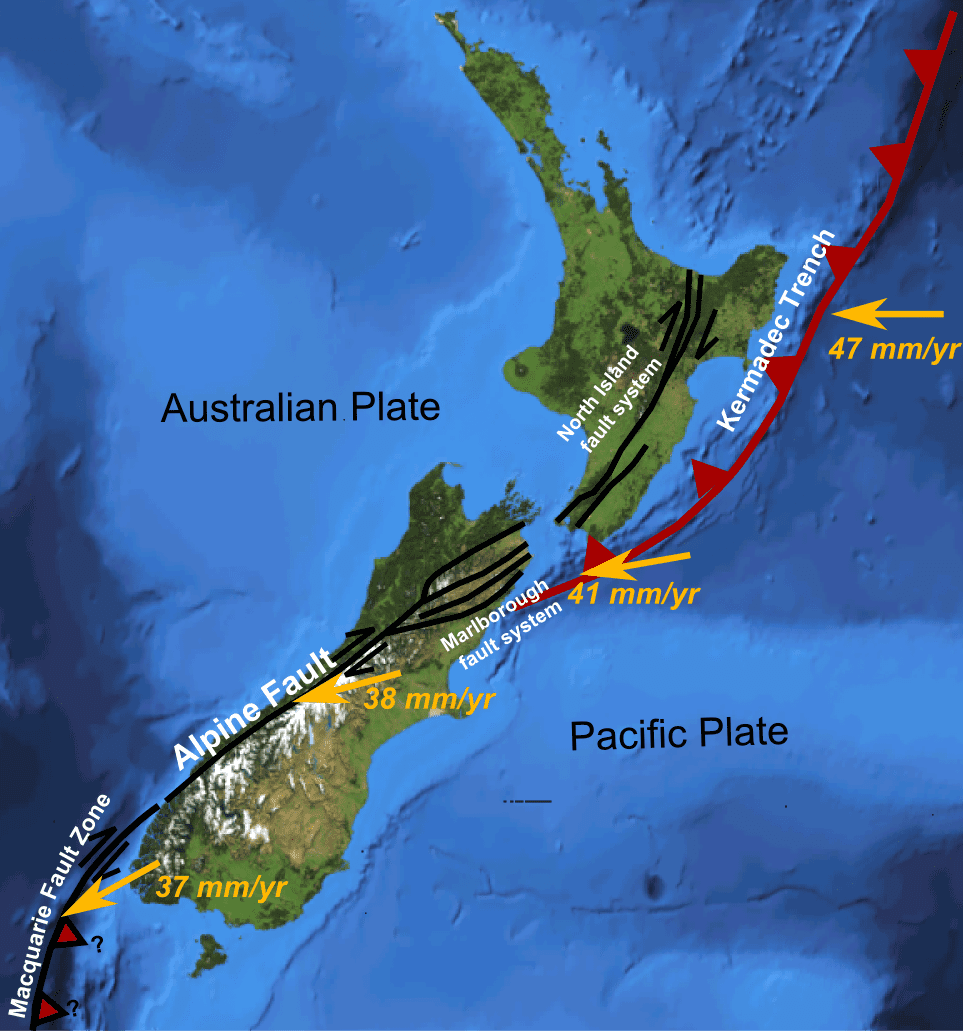For the first time, geophysicist in New Zealand will place seismic sensors deep into a geological fault to record the build-up and occurrence of massive earthquakes, potentially giving crucial information about one of the biggest faults in the world.
It’s hard to say anything after such an insightful and well explained video. The Alpine Fault runs for about 600 kilometres along the west coast of South Island, marking the boundary between the Pacific and Australian tectonic plates. It is a planar discontinuity over a huge volume of rock, across which there has been significant displacement – see the mountains.
Every year, the two tectonic plates slide by each other by about 2.5 centimeters; it may not seem like much, but just think of the incredibly massive volumes which are sliding this way, creating friction and building up pressure – and just think what the effects will be over hundreds of years. Geologists are confident that the fault is “ready to break in its next earthquake” — with a 28% chance of a rupture in the coming 50 years, which is another reason why this project is so important.
“If we go on to record the next earthquake, then our experiment will be very, very special,” says Rupert Sutherland, a tectonic geologist at New Zealand’s Institute of Geological and Nuclear Sciences in Lower Hutt, and one of the project’s leaders. “A complete record of events leading up to and during a large earthquake could provide a basis for earthquake forecasting in other geological faults.”
The costs of the project are $2 million, which are not that high when you consider the potential implications. The first step is to collect geological samples, then dig a shallow borehole and insert sensors into it. The hole will then be deepened and strengthened, and after this, more seismic sensors will be added. This will hopefully be done by December. Then, the data will be directly analyzed and inserted into computer models of faults, in order to better understand when and how faults break, and how this is foreshadowed.
For example, one idea is that large differences in groundwater pressures on either side of the fault zone could indicate that a big quake is imminent.
“The fault appears to currently form an impermeable barrier, and it’s likely that time-dependent differences in groundwater pressure on either side of the fault play a role in governing earthquake nucleation processes and the radiation of seismic waves,” says John Townend, a seismologist at Victoria University of Wellington, who is part of the project.











